best camera for moon shots
Are you passionate about capturing the ethereal beauty of the moon? Whether you’re an amateur photographer or a seasoned professional, moon photography requires the right equipment to achieve breathtaking results. As we explore the fascinating world of moon photography equipment, we’ll uncover the best camera for moon shots and reveal how you can enhance your lunar photography experience. So, are you ready to discover the secrets to capturing awe-inspiring lunar images?
Always Rely on PhotoPills for Moon Photography
When it comes to moon photography, planning is key. That’s why we always turn to PhotoPills, the ultimate app for moon photography planning and shooting. With PhotoPills, you can take your lunar photography to new heights and capture the moon like never before.
PhotoPills provides a range of powerful tools and features designed specifically for moon photography. These tools allow you to plan your moon shots with precision and accuracy, ensuring that you capture the perfect moment.
One of the standout features of PhotoPills is its planning tools. With these tools, you can determine the ideal shooting spot, date, and time for your desired moon shot. Whether you’re looking to capture a full moon rising over a beautiful landscape or a crescent moon setting against a city skyline, PhotoPills has you covered.
But PhotoPills doesn’t stop at planning. It also offers a wide range of shooting features that can help you capture stunning lunar images. One such feature is the field of view (FoV) visualization, which allows you to see exactly what your composition will look like before you press the shutter button. This ensures that you frame the moon perfectly within your shot.
Another powerful tool offered by PhotoPills is the augmented reality (AR) view. With AR view, you can use your smartphone or tablet to see a virtual representation of the moon in real-time, superimposed onto the scene in front of you. This feature is incredibly helpful for framing and composing your shots, allowing you to make adjustments before capturing the final image.
By relying on PhotoPills for your moon photography, you can maximize your chances of capturing breathtaking lunar images. Whether you’re a beginner or an experienced photographer, PhotoPills will help you plan, shoot, and achieve incredible results.
With its intuitive interface and comprehensive features, PhotoPills is truly a must-have app for any moon photography enthusiast. So why wait? Download PhotoPills today and start capturing the moon like a pro!
Choose the Best Camera for Moon Photography
When it comes to capturing stunning lunar images, selecting the right camera is crucial. Consider camera features that will enhance your moon photography experience, such as:
- Sensor Dynamic Range: Look for a camera with a wide dynamic range to capture the subtle details and tonal range of the moon’s surface.
- Low Noise Performance: Opt for a camera that produces minimal noise, especially in low light conditions, to ensure sharp and clean lunar images.
- Resolution: Higher resolution cameras allow you to capture finer details, resulting in more impressive moon shots.
- Stabilization: A camera with built-in stabilization technology helps to counteract any handheld camera shake, resulting in sharper images of the moon.
With these camera features in mind, here are some recommended cameras for moon photography:
- Nikon Z6 II: With its high dynamic range, excellent low light performance, and impressive image stabilization, the Nikon Z6 II is a reliable choice for capturing breathtaking lunar images.
- Sony a7 IV: The Sony a7 IV offers exceptional image quality, low noise levels, and advanced stabilization technology, making it a versatile camera for moon photography.
- Canon R6: Known for its excellent low light capabilities, the Canon R6 delivers sharp and detailed moon shots, thanks to its high-resolution sensor and powerful image stabilization.
- Fujifilm X-H2S: Ideal for astrophotography enthusiasts, the Fujifilm X-H2S combines impressive image quality, low noise performance, and advanced functionality for capturing stunning lunar images.
- Panasonic S1: With its high-resolution sensor and in-body image stabilization, the Panasonic S1 offers exceptional image quality and low light performance for moon photography.
By choosing a camera with the right features, you can elevate your moon photography skills and capture mesmerizing lunar images.
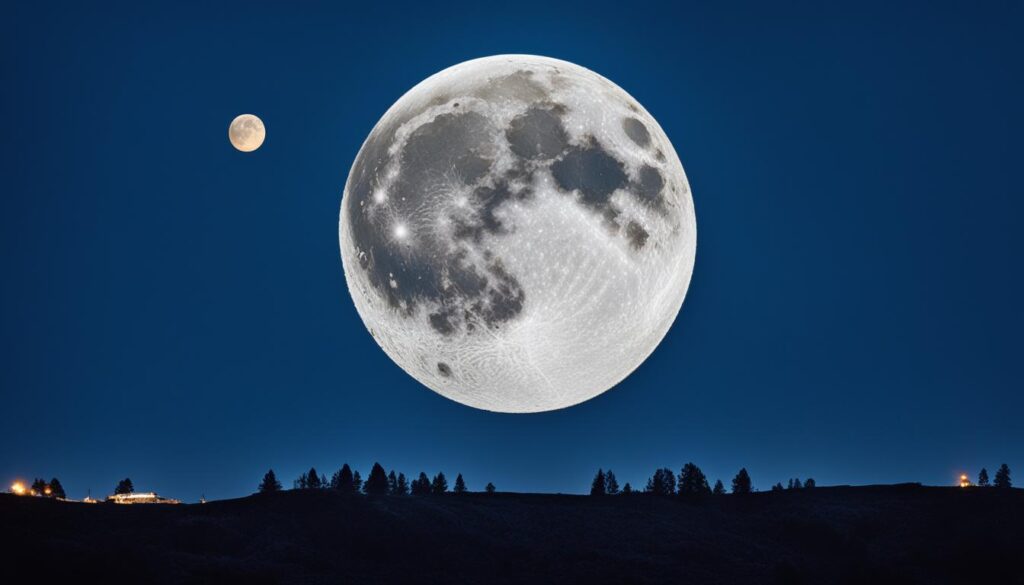
Find the Best Lens for Moon Photography
When it comes to capturing stunning moon shots, having the right lens is crucial. To ensure maximum detail and clarity in your lunar images, you need a long, sharp, and reasonably fast lens. A telephoto lens with focal lengths ranging from 1200mm to 2400mm (35mm equivalent) is ideal for filling the frame with the magnificent moon.
Several top lens options can help you achieve these desired focal lengths and capture breathtaking lunar images. Here are a few recommendations:
- Sony FE 200-600mm with a 2x teleconverter – This lens offers an impressive zoom range and the flexibility of a teleconverter, allowing you to effectively reach the desired focal length for detailed moon photography.
- Sigma 150-600mm with a 2x teleconverter – With its long reach and excellent image quality, this lens combined with a teleconverter can provide the necessary focal length to capture stunning lunar images.
- Canon 800mm with a Canon Extender 2x – This lens combination offers an incredibly long focal length and exceptional image quality, making it a top choice for professional moon photographers.
With these lens options, you can confidently capture the moon in all its glory, revealing its mesmerizing details and texture. Remember to pair your chosen lens with a suitable camera and tripod for optimal stability and image quality.

Enhance Your Lunar Photography Experience
In addition to selecting the best lens for moon photography, there are a few tips and tricks that can further enhance your lunar photography experience:
- Use a tripod: Stabilizing your camera on a sturdy tripod eliminates unwanted camera shake, allowing you to capture sharper and more detailed moon images.
- Shoot in RAW format: Opt for shooting in RAW format to capture more data and have greater flexibility in post-processing, resulting in higher quality moon photographs.
- Experiment with different exposure settings: Adjust your camera’s exposure settings to capture the moon’s varying phases, from the dazzling brightness of the full moon to the mysterious shadows of a crescent moon.
- Consider using a remote shutter release: Using a remote shutter release minimizes camera movement and reduces the risk of blurry images caused by pressing the camera’s shutter button manually.
By combining the right lens, camera gear, and techniques, you can capture awe-inspiring moon shots that will leave viewers in awe of the moon’s ethereal beauty.
Consider a Small Sensor Camera and Telescope Kit
Looking for a cost-effective option to capture stunning lunar images? Consider building a lunar photography kit using a small sensor camera and telescope. These kits, featuring small sensor cameras like the Pentax Q series, offer excellent results at a lower cost compared to telephoto lenses.
The Pentax Q-S1, when coupled with a compatible telescope, can achieve an equivalent focal length of 2000mm. This allows you to capture detailed and affordable moon shots without breaking the bank.
Why Choose a Small Sensor Camera and Telescope Kit?
- Cost-effective option for moon photography
- Pentax Q series cameras provide excellent results
- Long equivalent focal lengths at a lower cost compared to telephoto lenses
- Compatible telescopes allow for detailed and affordable moon photography
With a small sensor camera and telescope kit, you can capture stunning lunar images without breaking the bank. It’s an ideal choice for photographers looking to explore moon photography on a budget. Don’t let the small sensor camera fool you – it can deliver impressive results when paired with the right equipment.
Capture the Moon with a DSLR or Mirrorless Camera
When it comes to moon photography, DSLR and mirrorless cameras are the top choices among enthusiasts and professionals alike. These cameras offer exceptional image quality and the flexibility to capture stunning lunar images. Let’s explore some popular options:
DSLR Cameras:
1. Canon EOS 7D Mark II – This DSLR is known for its impressive image quality and advanced autofocus system, making it a reliable choice for moon photography. Paired with the right lens, it can capture breathtaking lunar shots.
2. Nikon D850 – With its high-resolution sensor and wide dynamic range, the D850 is another excellent option for capturing detailed moon images. It offers great flexibility in terms of lens compatibility, allowing for creative possibilities.
Mirrorless Cameras:
1. Sony a7R III – This mirrorless camera boasts a high-resolution sensor and exceptional low-light performance, making it well-suited for moon photography. Its compact size and extensive lens selection offer convenience and versatility in capturing lunar images.
2. Canon EOS 80D – The EOS 80D combines the advantages of a mirrorless camera with Canon’s renowned image quality. It offers excellent autofocus capabilities and a range of lenses to help you get those perfect moon shots.
Both DSLR and mirrorless cameras provide remarkable opportunities for capturing the beauty of the moon. Remember to select a camera that aligns with your specific needs and preferences, and pair it with suitable lenses and additional equipment for optimal results.
Lets move forward to Section 7 where we wrap up our discussion on moon photography equipment and share some final thoughts on capturing breathtaking lunar images.
Conclusion
When it comes to capturing stunning lunar images, having the right camera and equipment is essential. While the best camera for moon photography is the one you already have, it’s worth considering cameras with features like high dynamic range, low noise, and stabilization for optimal results. These features can help you achieve sharp details and minimize noise in your moon shots.
If you’re looking to fill the frame with the moon and capture intricate details, pairing your camera with a telephoto lens is a great option. A telephoto lens with focal lengths ranging from 1200mm to 2400mm (35mm equivalent) can provide the reach you need to capture breathtaking lunar images. Alternatively, you can opt for a small sensor camera and telescope kit, which offers a cost-effective way to achieve long equivalent focal lengths.
To maximize your chances of capturing the perfect lunar image, it’s important to plan your moon photography sessions. Tools like PhotoPills can help you determine the best shooting spot, date, and time for your desired moon shot. With features like field of view visualization and augmented reality view, PhotoPills can assist you in accurately framing and capturing the moon in your photographs.
Remember, capturing stunning moon shots requires practice, patience, and experimentation. By using the right camera and equipment, planning your moon photography sessions, and honing your skills, you can capture breathtaking lunar images and create memorable works of art.
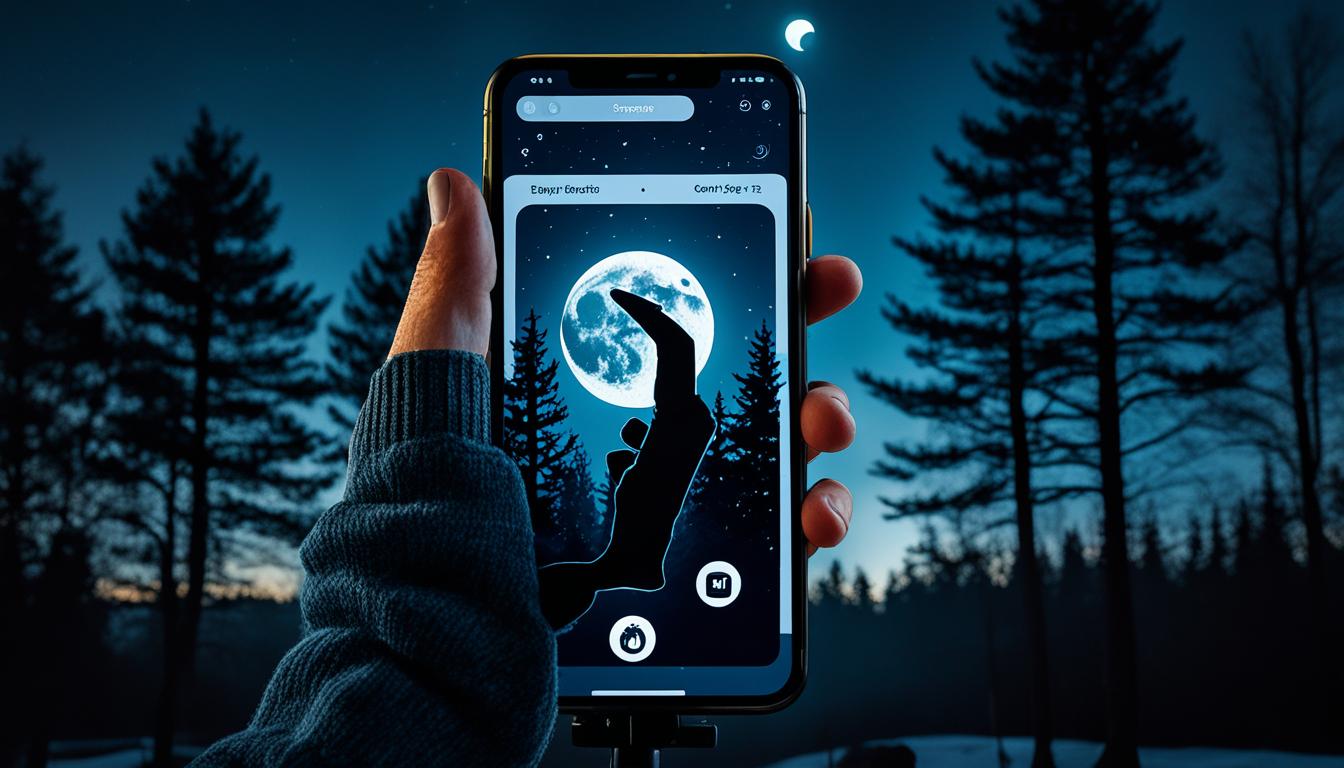
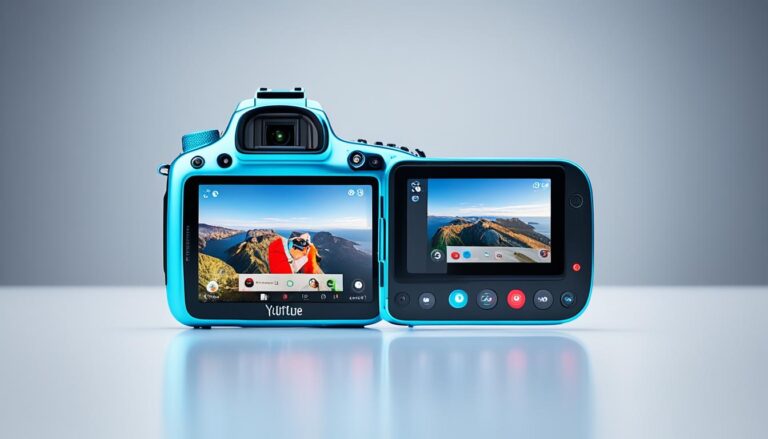
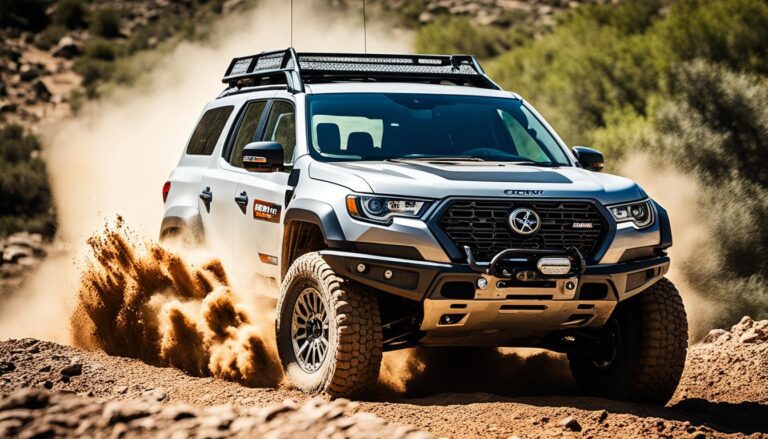
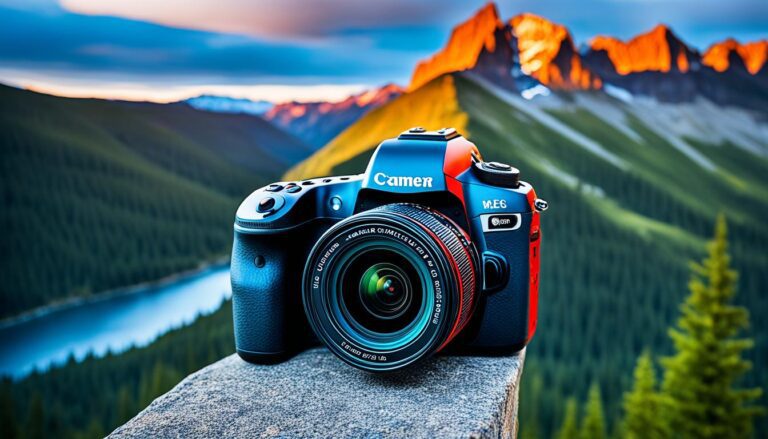
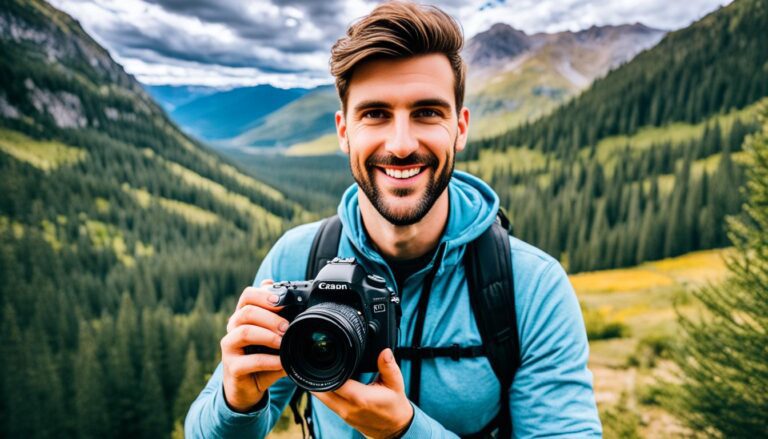
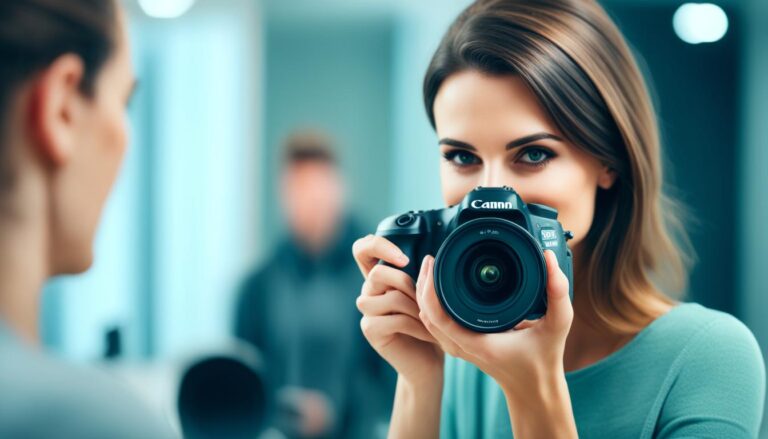
![Best Point And Shoot Camera With Long Zoom [2024]](https://mydreamcamera.com/wp-content/uploads/2023/11/best20point20and20shoot20camera20with20long20zoom2e61-768x768.jpg)